There are certain foods that feel like a warm hug from the past.
Lentil soup is one of these.
Split pea is another.
The soups I remember usually began in my mother’s kitchen with a deep stainless steel stock pot half-filled with water to which were added beef shank bones, some dried brown lentils (or split peas), along with chopped onions, leeks, celery, carrots, a bay leaf or two, salt and pepper—and that was it.
After a couple of hours of simmering, the resulting soup, thick and fragrant, was parceled into bowls, served with rye bread (the kind with caraway seeds and dusted with cornmeal that my father sliced from long brown bakery loaf) and some of the “soup meat” that clung to the bones.
Occasionally there were chunks of kosher hotdogs in the soup —or the cute little cocktail wienies we kids loved. This was a typical weekend lunch or sometimes Sunday “supper,” a lighter meal we might eat after returning from a trip to the beach or my grandma’s house in Berkeley.
With temperatures in Southern California dipping into the 40s at night and a stiff wind whipping up waves and rattling tempers (okay, it’s usually in the low 60s and sunny during the day, but we’re spoiled and thin-skinned in these parts!), a bowl of hot soup still seems like the perfect lunch—or dinner. For my husband Jeff, of course, soup is perfect any and every day of the week, though his preferred kind is tortilla. (You can find my recipe for that, written some 10 years ago but still on regular rotation in my kitchen, below.)
Lentils are so easy. Unlike dry beans, they don’t need to be soaked and take far less time to cook, usually from 10 to 30 minutes, depending on the type, with red lentils taking the least amount of time and brown lentils the most. Somewhere in the middle are black lentils, which Bon Appétit refers to as “the caviar of lentils” because they’re small, hold their shape, cook quickly and are so versatile and delicious.
There are also French-style green lentils, which also remain neatly round after cooking, and an Italian-grown variety called the Puglia lentil that I came across while perusing my favorite source for beans and lentils, Napa, CA-based Rancho Gordo. Of course I must give them a try!
The website described the Puglia as a “firm, nutty lentil prized throughout Italy and commonly eaten on New Year's Day for good luck.” Apparently the lentil’s coin-like shape is supposed to represent luck and prosperity.
The healthful properties of lentils are another reason to add them to your diet: they’re high in protein and fiber and low in fat, sodium and calories.
Soup, beautiful soup!
Although some turn up their noses at them, the workhorse brown lentils that I grew up eating and that my mother stored in large glass canisters in the pantry, are really wonderful in soup; that they might get soft and melt into a flavorful potage with the vegetables, spices, herbs and broths you add is really a plus in my book. One caveat, though, is that the cooking times may be longer if the lentils are old, so try to pick them up at stores with a high turnover of dry legumes (beans, lentils, etc.), sometimes called pulses. For salads, side dishes and elegant vegetarian or vegan dishes, I would recommend the varieties that do hold their shape, but for soup, the humble brown lentil will do just fine.
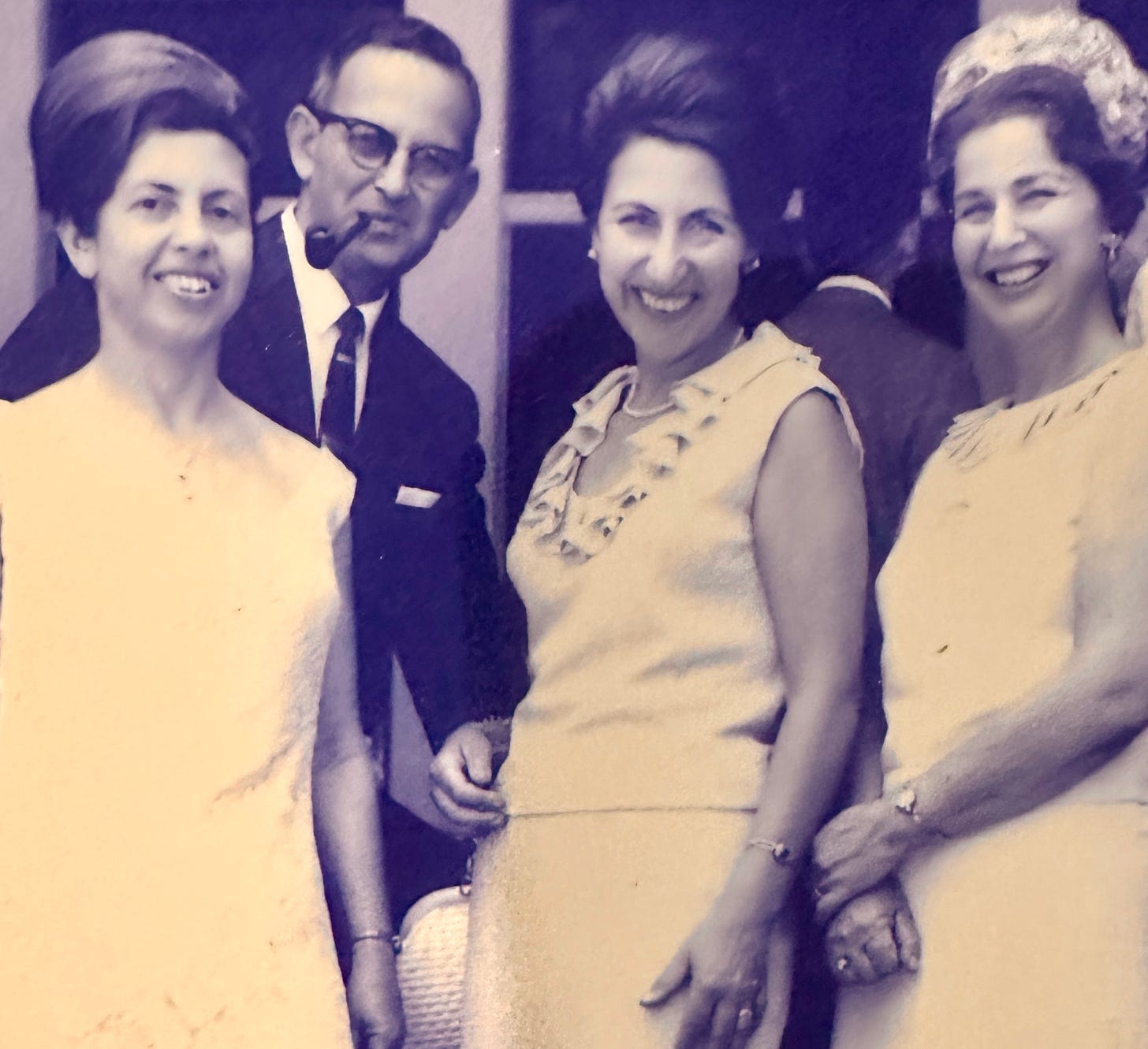
I got the idea to make lentil soup this weekend from my cousin Tina, who, with a new grandchild in the house, suddenly finds she’s feeding a larger household (though not the baby yet!). Tina turned to a recipe her mother, my late Aunt Ilse, developed to teach a cooking class at a day treatment program for people with mental illness. The soup is sheer comfort food and relatively simple, so I think it would be perfect for those fighting inner demons, but also for those of us coping with the stresses of a new year and resolving to eat healthier. It could easily be vegan or vegetarian if you leave out the sausage and sub vegetable broth for chicken. Beneath the copy of the recipe below are some changes I made and suggestions for others you might try.

Notes:
I diced and sautéed all the vegetables and didn’t pre-cook the potatoes and parsnips. I simmered the lentils in the V8 juice and broth, adding the sautéed vegetables when the lentils were almost cooked.
Instead of Aidell’s, I used Trader Joe’s Sweet Italian Chicken Sausage, which I fried and added to the soup. In memory of the kosher franks my mother used to add to her lentil soup, I also topped the soup with chopped Nathan’s Famous hotdogs, though Jeff requested his dogs be made “swanky franky” style—split, fried and frosted with melted cheese.
I firmly believe cooks must adjust recipes to suit their tastes. I found the soup a bit too sweet—perhaps because I used a huge parsnip, which is a fairly sweet vegetable or maybe the V8 juice, which includes beets. One way to remedy an excess of sweetness in a recipe is to add something sour, like lemon juice, which I did from the juice of two or three small lemons. I also added some spices, including several sprinkles of cumin, za’atar, paprika, Herbs de Province, Aleppo pepper, a handful of chopped cilantro (including stems) and a teaspoon or two of grated fresh ginger root. Some other possible additions: chili powder, turmeric, curry powder and smoked paprika.
To make the soup vegetarian or vegan: sub vegetable broth for the chicken, leave out the sausage or use a vegan or vegetarian substitute, or sub chopped, sautéed mushrooms.
Other additions that work well in lentil soup are canned or cooked garbanzos; chopped spinach, kale or chard; parsley, basil, thyme or other herbs; leftover defatted chicken gravy. Instead of V8 juice, you can use a couple of tablespoons of tomato paste, plus water or broth; canned, chopped or puréed tomatoes or tomato sauce, or some homemade or store-bought broth.
For a smoother soup, purée one-third to one-half of the mixture before adding any toppings.
The soup thickens in the fridge, so add water or other liquid when you reheat and stir frequently from the bottom to make sure it doesn’t burn. You may need to spike the taste with more salt, pepper, a squeeze of lemon or a dash of your favorite spice when you warm it up.
The King Tides Are Coming—and Béla Fleck!
Jeff posted a splendid newsletter this week about the California King Tides Projects, community events taking place on Jan. 11 and 12 and again on Feb. 9 to photograph the highest tides of the year along the California, Oregon and other coastal areas. The tides, caused by the relative positions of the moon and the sun and their gravitational pull on the Earth, are important to document in order to help prepare for the effects of rising sea levels caused by climate change.
In addition to offering some tips on capturing pictures of the towering waves, Jeff, a huge admirer of mega-talented banjo virtuoso Béla Fleck (as am I!), links to Béla’s thoroughly enjoyable bluegrass take on George Gershwin’s “Rhapsody in Blue,” which will be released on his next album in February. I danced around the kitchen while listening and I bet you will too!
Thanks again for reading, liking, commenting, sharing and subscribing. Please let me know if you’re a fan of lentil soup—or if you have another soup you love. Or perhaps soup isn’t your thing at all. What do you eat to warm up in winter? I’d love to know.
See you soon!
Ruth

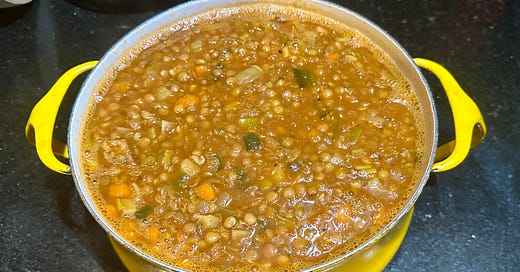


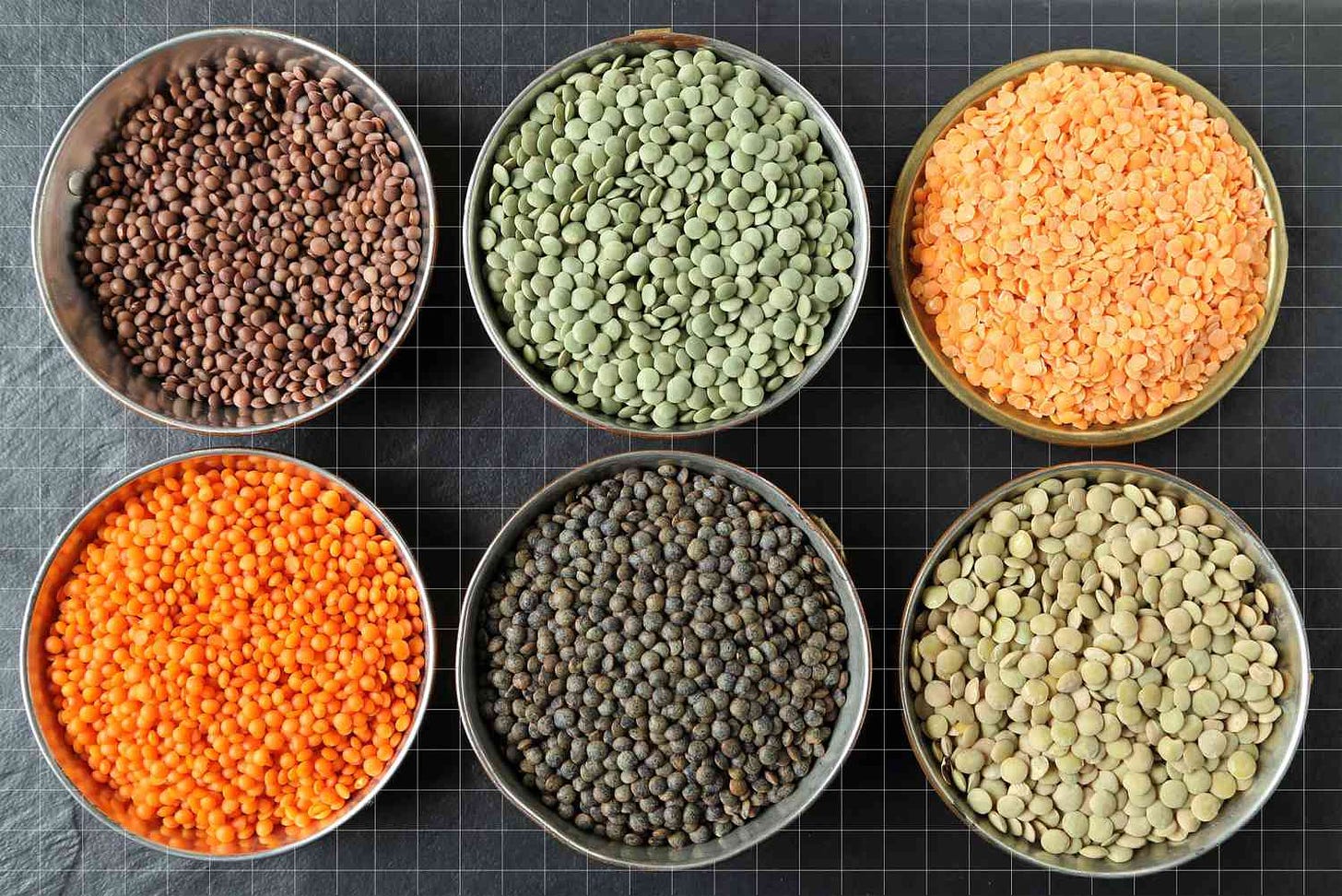

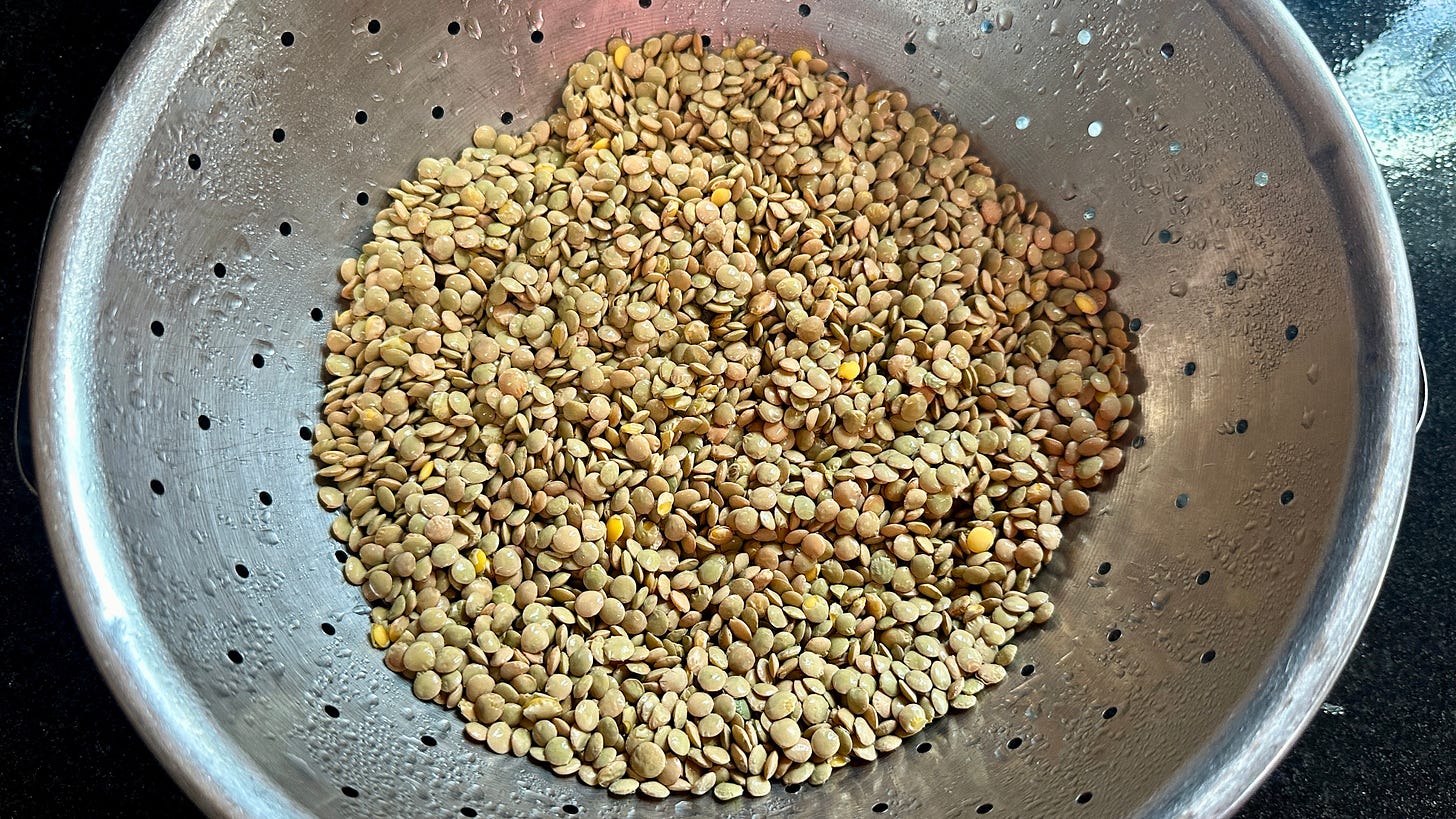

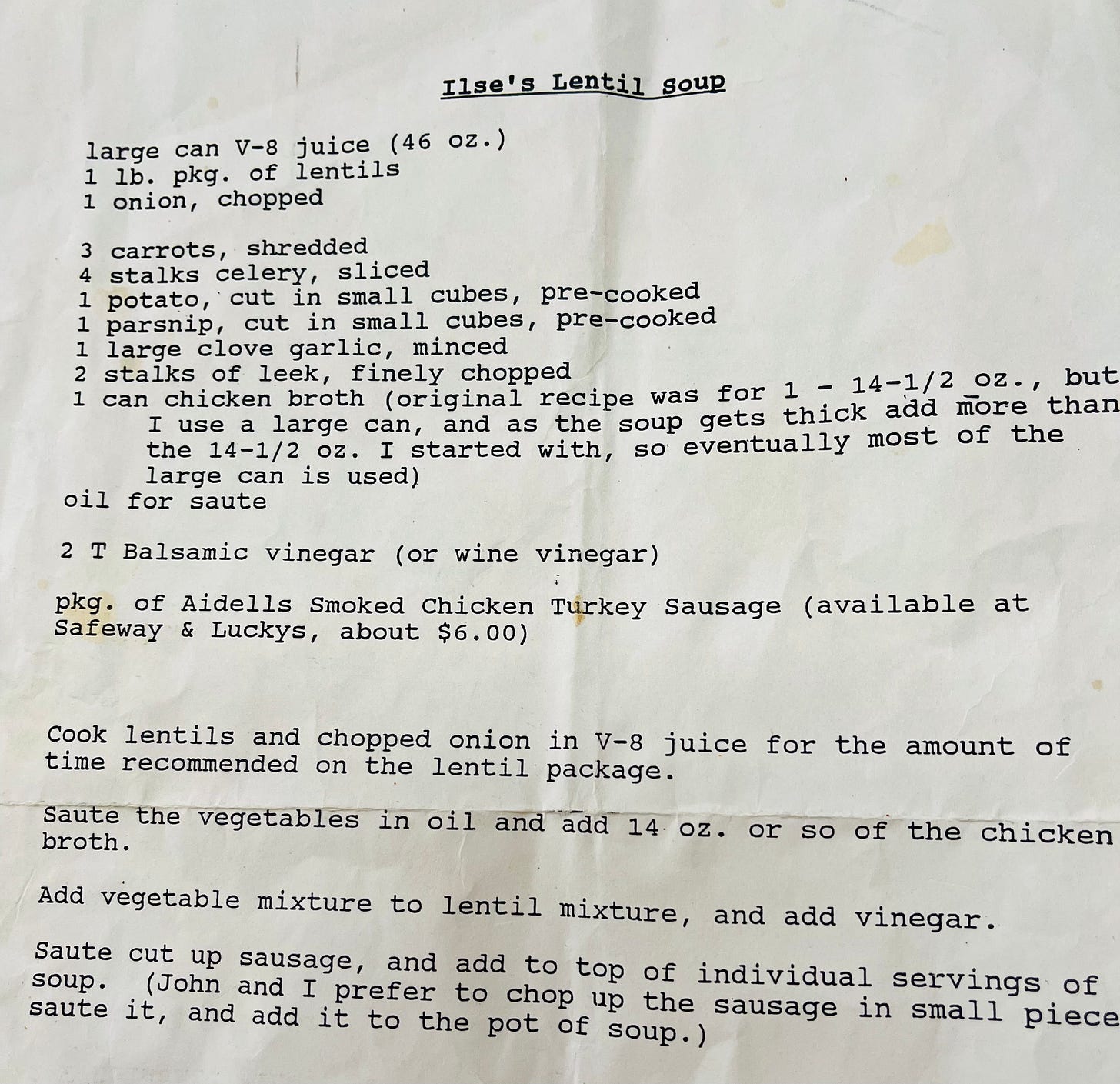
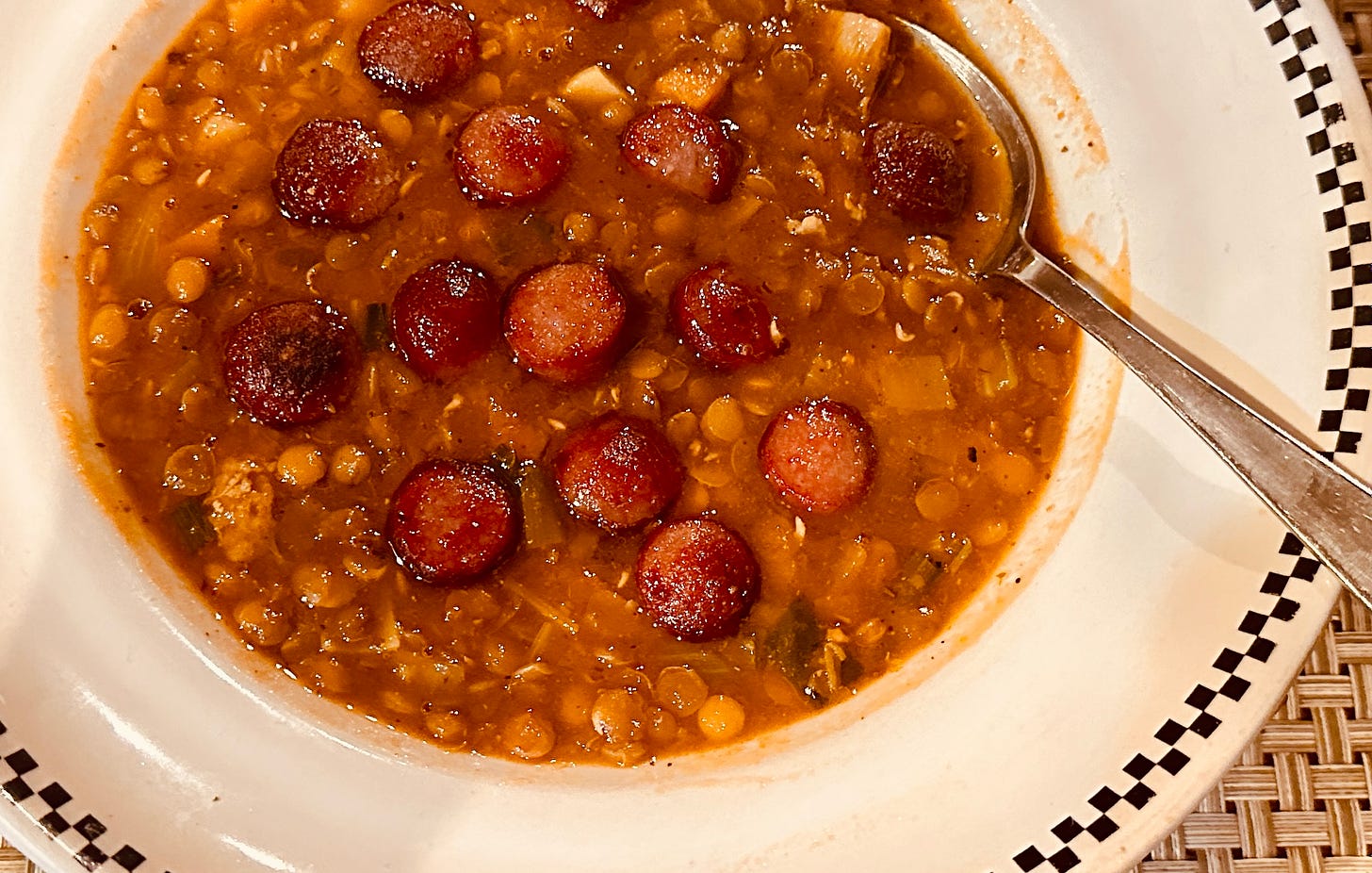
Thanks @Ethan D. Chorin!
I love soup! I like how everything cooks in one pot and it provides for more than one meal. That is a good tip about adding lemon if something is too sweet. I am writing about soup this week as well.
I agree that lentils are so perfect because they cook quickly. I generally add some spinach to my lentil soup. I'm going to try the spices that you use! Thanks, Ruth.